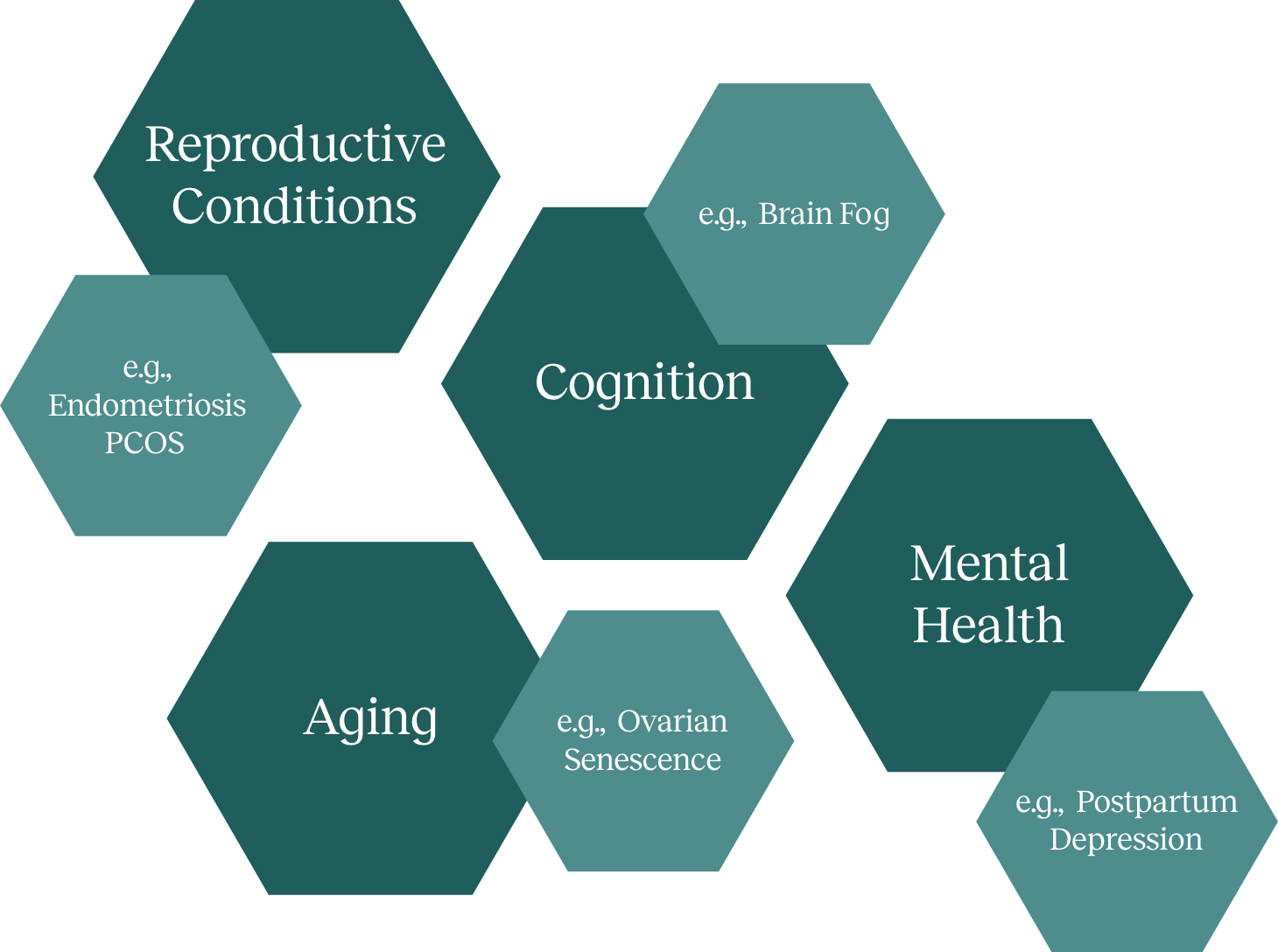For decades, women’s health has been overlooked and underfunded. We owe women a century of science and it all starts with data. Our goal is to generate some of the most comprehensive and inclusive data ever acquired for women's brain health. What do we mean by “Women’s Health”?
Conditions and
experiences
that affect
women
Exclusively
e.g., menstruation, pregnancy, menopause
Disproportionately
e.g., depression, dementia, autoimmune disorders
Differently
e.g., cardiovascular disease, stroke
Breakthroughs in women's health depend on generating the right data. We follow three tenets:
Go Broad: Embrace population diversity
Our flagship project, the WBHI Brain Bank, harnesses the power of the University of California, pooling MRI images and women's health data from thousands of participants across seven sister campuses. Big data, paired with the computational horsepower of AI, could help us understand how a range of health factors, like sleep quality or inflammatory conditions like endometriosis, influence the brain.
Go Deep: Collect detailed data
In contrast to collecting a single snapshot of the brain on a massive number of people, deep phenotyping allows us to collect a massive amount of data on each individual. WBHI studies of the menstrual cycle, pregnancy, and menopause add multi-level phenotyping, such as high-throughput proteomics, genomics, and advanced multimodal brain imaging.


These approaches enable us to explore how women’s health factors relate to brain function, cognition, behavior, and overall health. Learn more about our current projects to see how we’re beginning this important work.

Data drives discovery. And when the data are shared, the discoveries never stop. At WBHI, de-identified data from our flagship projects are available on OpenNeuro, a data archive run by our Data Coordination Core at Stanford and used by the neuroscientists around the world.
